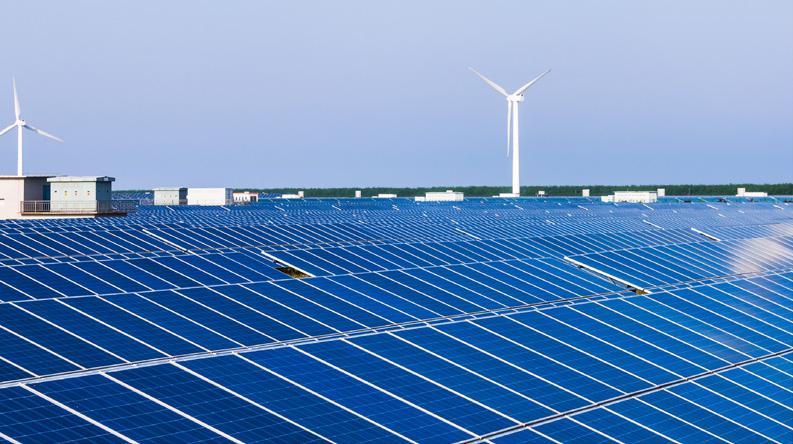
5 minute read
The Future of Electric Rates
By CEO Brett Orme
Kiamichi Electric Cooperative (KEC), along with most energy utilities have concerns about the future of electric rates. These concerns are due to the rise of cost associated with the components that impact the cost we all pay for electricity.
Advertisement
Factors currently or soon to be affecting electric rates are the February’s 2021 Polar Vortex costs, current natural gas prices and the rising costs of materials and equipment. This is how each of these components will affect your electric bill:
THE POLAR VORTEX
The winter storm that occurred in February 2021 was a major winter event. This storm brought frigid air across much of the central U.S. from February 14 through the 20th including some states that are unaccustomed to severe winter conditions. February 15, 2021, was the coldest day in Oklahoma’s history at -.7 degrees. The coldest 2 and 3 day periods in Oklahoma’s history also occurred in February of 2021 when historically temperatures for this period are in the high 30’s to low 40 degrees.
The Southwest Power Pool (SPP) is a regional power market that serves a 14-state region in the central US, excluding Texas. Many utilities purchase power from this market including OG&E, PSO and Western Farmers who is KEC’s primary power supplier. SPP has never had to deal with an event like the polar vortex in their 80-year history. The bulk electric power system was stressed to its limits, resulting in the implementation of rolling blackouts.
SO, WHAT HAPPENED?
While there was enough generating capacity in the SPP footprint to serve the load, fuel delivery - primarily natural gas delivery - became a severe problem. Frozen wells and well heads drastically restricted the flow of natural gas to the power plants. Capacity requirements exceeded capabilities so rolling blackouts were implemented to protect the electric grid integrity. The extraordinary demand for natural gas coupled with the severely restricted gas supply pushed fuel prices to extreme levels. Some power suppliers spent more on natural gas in this 2-week period than is typically spent all year. Typical gas prices historically were $2 to $3 per MMBtu, but during the storm, gas sold for $1,200 at peak and averaged $250 per MMBtu.
The cost impact of this storm on Oklahoma utilities is in the several billiondollar range. KEC’s primary power supplier’s cost due to the Polar Vortex is $183 million, with KEC’s portion of these costs equaling just over $8 million. This cost is primarily fuel related to keep the generating units going under these extreme conditions and keeping, our members’ lights and heat on.
As directed by the State of Oklahoma and the Oklahoma Corporation Commission these costs will be recovered over time to prevent consumers from receiving electric bills potentially in the thousands of dollars and hopefully lessen the impact and burden to our members. The $8 million KEC must pay will be recovered over a 5-year period and will impact KEC’s average member around $5 (5 mills/kwh) per month. These charges will begin on January 1, 2022, which will be reflected in the February 2022 billing for most accounts.
THE CURRENT PRICE OF NATURAL GAS
KEC’s power supplier does have a diversified portfolio of generating capacity that includes renewables, coal, and natural gas. Depending on the demand for electricity the most economical generation is used first to provide the cheapest power possible.
Fuel accounts for 60% of the costs to generate electricity and power costs in 2021 (excluding the polar vortex) have been up as much as 63% from the same time last year. A key factor that contributes to these rising costs is the significant demand for natural gas and limited storage due to current demand as well as low inventories due to the polar vortex. Our power suppliers have historically paid approximately $2 to $3 per MMBtu, they are now seeing $5 to $6 per MMbtu and in some cases even higher. Expectations and forecasts are for gas prices to remain at this level through spring of 2022. This increase in natural gas prices will affect the average KEC member by $3 (3 mills/kwh) per month.
KEC’S COST IMPACTS
Like many other industries KEC has been affected by supply chain issues for materials, transformers, and equipment. With a low supply and a high demand, this has caused costs to increase and lead times to drastically dexpand. We are working hard to stay ahead of these lead times so that we can ensure KEC members’ service and reliability are not adversely impacted any more than necessary. KEC’s average material costs have increased by approximately 30% since 2020 and in some cases have more than doubled! We have also seen equipment costs increasing by as much as 25%.
KEC has been fortunate in that we have experienced a 10% growth in revenue from 2020. This is very good because historical numbers have been relatively flat, and this growth will help offset increases in costs. KEC is planning to complete a cost-of-service study during the first quarter of 2022. The results of this study will determine if the need exists to restructure rates and to re-evaluate KEC’s base charges.
I realize currently there is not a lot of positive news concerning rates other than your system is growing. I do want to assure you we will do everything we can to keep rates as low as possible while still providing safe and reliable power to you, our members. Everyone will be kept up to date and informed concerning your cooperative and the rapidly changing industry.
Thank you for being the best part of Kiamichi Electric!


